Executive Privileges
Should Mike Brown Continue to Be the Most Powerful Bureaucrat in Santa Barbara County?
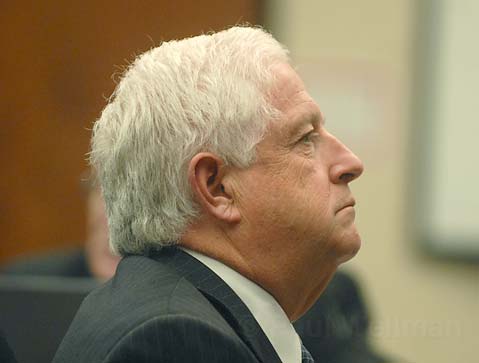
The date was September 29, 2004. On the closed-session agenda for the Santa Barbara County Board of Supervisors was a performance review of Mike Brown, who’d been the county administrator for the past six years. It was the supervisors’ first chance to evaluate Brown fully since they’d paid out nearly $1 million to former personnel director Ann Goodrich, who claimed Brown had retaliated against her when she complained about his “harassing workplace conduct.” But the review wasn’t just concerning Goodrich-there were other concerns about Brown’s performance, “serious concerns” as some described them.
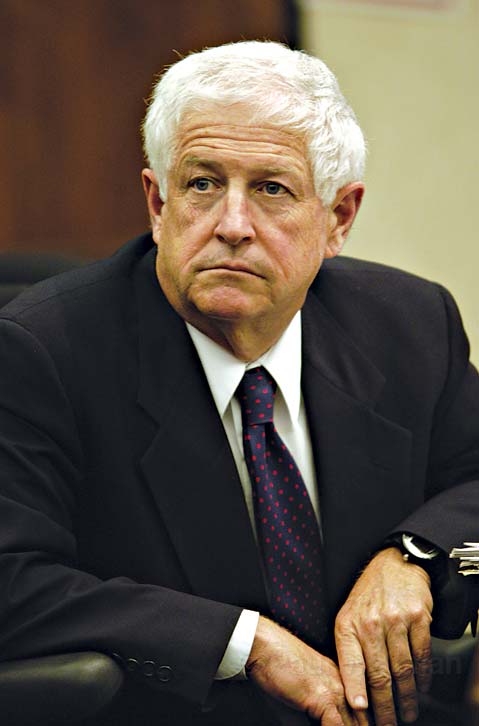
That autumn, the county’s balance of power was on the verge of a dramatic shift, a reality that wasn’t lost on the supervisors that morning. Months earlier, Brooks Firestone, a businessman and property-rights Republican, had been elected to replace the environmentally minded Democrat Gail Marshall as 3rd District supervisor, the pivotal swing seat on a five-seat board usually split between right-leaning North County supes and left-leaning South Coast ones. Though he wouldn’t be sworn in until January 2005, Firestone-who never returned repeated phone calls for this story-had already expressed confidence in Brown, even threatening to reinstate the administrator with the incoming conservative majority if Brown’s contract wasn’t renewed.
So the lame duck performance review resulted in a new seven-month contract for Brown, which was unanimously approved one week later. The vote was later regretted by the entire 2004 board majority. “One of my failures as a public servant was in not reevaluating Mike Brown’s contract and duties before I left the board,” Marshall said recently. “I think he should’ve been replaced.”
Instead, one of Firestone’s first objectives once in office was to give Brown more authority, according to the supervisor’s former aide Bob Field. Empowering Brown with more departmental oversight and control was first proposed by 5th District Supervisor Joe Centeno, but the old board majority wouldn’t stand for it. Now, with Firestone onboard, the needed votes to pass such an ordinance were locked in, and in March 2005, the supervisors voted unanimously to turn County Administrator Mike Brown into the county’s executive officer, or CEO, thereby endowing him with increased responsibility, duty, and power. Said retired deputy CEO Jim Laponis, “The board directly wanted it, and directly set it up.”
Since then, Brown-contrary to what he purports, but according to the vast majority of the more than 60 people contacted for this story-has become the most powerful person in the county, even surpassing the supervisors in day-to-day control of county affairs. While the CEO structure has led to some streamlining and higher efficiency, it’s also created controversy and fostered friction inside and out. Brown has chopped off communication between department heads and supervisors and between county staff and the public. There’s been top-level turnover in every department he oversees and, down the ranks, morale is suffering due to Brown’s heavy-handed, dictator-esque reputation. A loss of trust and a sense of retaliation now pervade much of the county bureaucracy. On top of all of this, Brown’s volatile temper and questionable judgment have caused him to be put on administrative leave, triggered at least three official complaints, and cost the county nearly $1.4 million. And Brown’s left a similar trail of tribulations in his power-centralized wake in other jurisdictions where he’s served.
But this January, with Doreen Farr taking the 3rd District reins, the board’s balance of power shifted back to a left-leaning majority for the first time since 2004. Even before the final ballot was counted, county workers and watchers were abuzz with questions about the future of the CEO position and of Brown himself. Many believe that Brown has used the new position to tighten power in dangerous ways and, many believe, to take from the season’s popular mantra, change is now needed.
It remains to be seen how far the new board will go to reel in Brown, if it does anything at all. But it appears the board is ready to do something, because just last week, Farr and 2nd District Supervisor Janet Wolf asked for a hearing on February 17 to evaluate Brown, reopen the ordinance that gave Brown executive powers, and consider a return to the way it was.
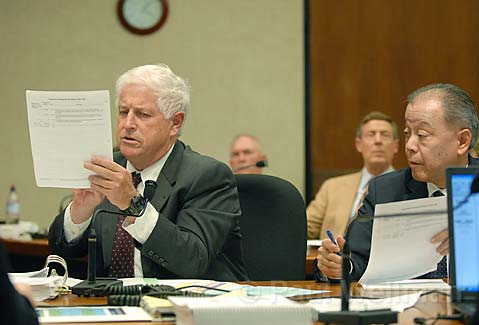
Who Is Mr. Brown?
“I was a career city-management type,” explained the occasionally personable Mike Brown during a recent interview. Speaking from behind a desk in an abandoned office on the first floor of the County Administration Building, Brown was distinguishing the business-like structure common in city government from the bureaucratic architecture utilized in many counties. With such a background, Brown seems to suggest that it was only natural for the County of Santa Barbara to take the CEO model, and he’s clearly proud of the changes he’s spearheaded.
Sitting in the drab room where walls are pockmarked by nails that once held paintings and pictures, the 64-year-old Brown is not intimidating in person. His long face, framed by white hair on top and large ears on the sides, is almost in constant movement, one second looking as if he’s grimacing, the next as if he’s satisfied and smiling. Short and pudgy, the history buff is quick to go on esoteric tangents, regularly leaving those around him impressed and confused. He’s been called both a brilliant man and a megalomaniac in the same sentence, but almost everyone admits that he’s usually the hardest worker in the room.
After attending Santa Monica High School, Cal State Northridge, and UC Berkeley, Brown received his masters from the University of Texas, and then attended a number of post-graduate programs, including the NYU Real Estate Institute, the Yale School of Management, and the UC Berkeley Goldman School of Public Policy. He then was hired as a budget analyst by the City of Hartford, Connecticut, the state’s capital and home to about 150,000 people and major insurance and financial firms. Brown spent 18 years in Hartford-eventually becoming deputy city manager before going to work for the state’s housing department-but returned to California in 1989, when he took a job as city manager in Berkeley. Infrastructure improvements were his main focus, but the 1991 Oakland Hills Fire affected him deeply. Only 68 houses burned down in Berkeley, but the Oakland Hills burned brightly above Brown’s city, prompting major recovery efforts and battles against looming mudslides. “That was a very profound experience,” he said.
After Berkeley, Brown moved in 1993 to a city manager position in Tucson, Arizona, his last stop before Santa Barbara County. It provided a nice pause between natural disaster-prone areas, joked Brown, but the similarities to Santa Barbara County were undeniable: The economy was based on tourism, and Tucson had both a major university and an Air Force base. And, like Santa Barbara, Brown explained, “People come [to Tucson] and decide they want to live there.”
But also like this county, Brown began amassing control in Tucson shortly after taking office. The city manager’s position was already powerful, but Brown wanted more. He hired a man named Kent McClain to run the Department of Water; according to Dave Devine, a former city council aide and current writer for the Tucson Weekly, McClain was-“to put it charitably”-unqualÂ-ified. In desert cities like Tucson, it’s all about water, and putting someone unqualified like McClain in such a major position was seen as a power grab by Brown, who retained the real authority over the department. “He wanted that control,” said Devine.
In the ensuing years, Brown had several run-ins with councilmembers and the mayor. He was accused of ignoring existing policy, mishandling water issues, and mistreating the staff. Former city councilmember Molly McKasson reportedly said she was displeased about the way employees were treated, and that Brown sometimes worked to “divide [the council] against ourselves.” Devine recalled, “His people skills were terrible, but he got things done.” Then-mayor George Miller-who didn’t return phone calls-also reportedly wanted him fired. By 1996, there was an effort to unseat him, but the council eventually voted 4-2 to keep him around. Despite that vote, Brown didn’t last much longer there, and in 1996 he responded to a nationwide recruitment campaign from Santa Barbara County.
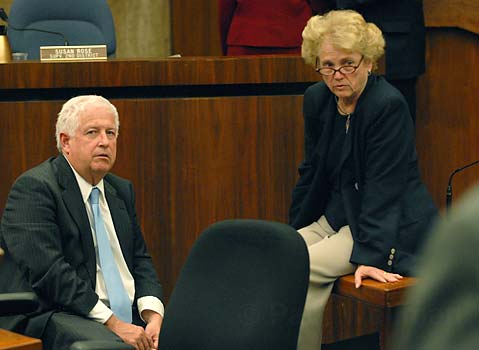
and she, along with two other former supervisors, regrets not taking action when she could.
Welcome to Santa Barbara
For eight years, Brown played the traditional county administrator role in Santa Barbara County. But based on his experience as a city manager, Brown also advocated for a more streamlined process, arguing that a centralized power structure-rather than numerous department heads reporting directly to the board-would allow the county to get more done more efficiently. Then, in 2005, power shifted in favor of business-like efficiency over bureaucratic caution, and Brown was crowned county executive officer.
To this day, Brown downplays his new role, explaining that the CEO ordinance “didn’t change very much.” But the fact remains that Brown became the organizational head of the county and took responsibility for reporting directly to the Board of Supervisors. In the former county administrator system, there was direct communication between supervisors and staff members on policy issues, but that’s no longer the case. In other words, all roads to the Board of Supervisors must go through Brown.
Consequently, there is a greater degree of control for Brown, said former county counsel Shane Stark, and “centralized communication with not only the board but the public.” But the change has, in some cases, made it harder for both the board and the public to get answers. Calls from supervisors to staff aren’t returned, at least until they consult with superiors in Brown’s office, and department heads are not allowed direct contact with the supervisors. Some county employees even cited memos with guidance on how to “handle” supervisors. (Brown denied that, assuring, “We never issued any directive to that effect.”)
And it’s not just communication. With the goal of efficient, effective, and service-oriented government, the CEO ordinance also put Brown in charge of employment, including the ability to hire and fire the heads of nine different county departments. “You had a person, Mike Brown, with considerable experience as a city manager and [he] very much wanted-no, appreciated -the value in having that responsibility focused,” explained retired deputy Laponis. A former supervisor said it more strongly: “From the moment he changed his classification, Mike was in charge.”
Such a centralized structure makes a real impact on decision makers, said former 1st District supervisor Naomi Schwartz, who left office in 2004 before Brown became CEO. “When things are done at an administrative level,” she explained, “it really minimizes the authority of the boardmembers.”
Brown, however, still believes the power rests with the board. “The elected Board of Supervisors has total legal and policy control of the administration and the county,” he said. “My job is to execute their policy and advise them of opportunities or potential problems. I am their agent. : I can’t do anything, actually, without board policy approval.”
Turnover Central
Aside from what Brown can and cannot technically do, his presence is felt in all county circles. Of the nine departments now controlled by the CEO, all have seen their leadership come and go under Brown. Surely not all of the departures can be connected to Brown, but his influence has been cited in many of them. The same thing happened in Tucson, too, where Brown replaced 11 department heads and assistant city managers. In Santa Barbara County, the list of the departed-some of whom retired or left soon after their promotion or hiring-includes public health director Roger Heroux, human resources director Ann Goodrich, public works director Phil Demery, parks director Rick Wheeler, housing director Ed Moses, and planning director Val Alexeeff. (Alexeeff, who now works in Santa Clara County, denied rumors that Brown forced him out after two years on the job, saying, “That wasn’t the way it played out. : We wanted to make changes and just ran out of time.”)
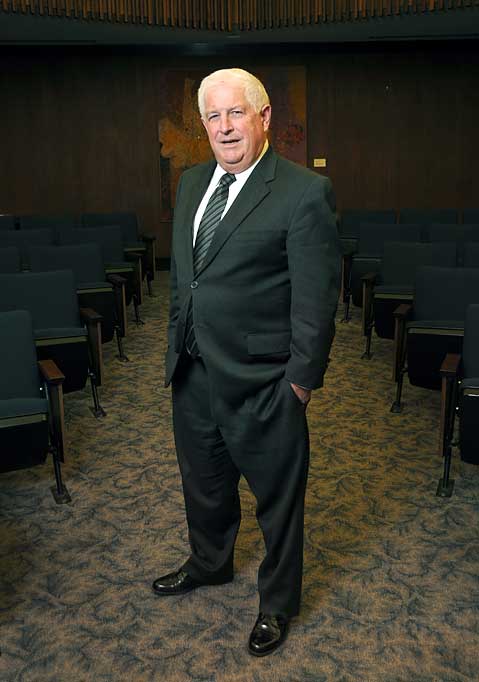
Other departments, over which Brown has some supervision, have also seen recent turnover. Dr. Jim Broderick, director of the beleaguered Alcohol, Drug, and Mental Health Services (ADMHS) for more than five years, resigned in March 2007. Shane Stark retired as county counsel last year. Fire chief John Scherrei retired last year, and was replaced in the interim by Tom Franklin. Though Franklin wouldn’t respond to interview requests, others have said that while he’d be a shoo-in for the permanent chief job, he’s hesitant because of Brown.
But there’s little need for hesitation for those who work well with Brown. “Mike Brown valued loyalty to him above all else, including intelligence, professionalism, and service to the public,” charged Lori Norton, who left for Sonoma County after eight years working under Brown. “As a result, highly competent individuals throughout the organization were leaving and being replaced with ‘yes people’ who were willing to carry out any direction from the County Administrative Office even if it crossed ethical and/or legal boundaries.”
That loyalty factor, say Brown’s critics, was in play in 2008, when two assistant CEOs-Jim Laponis and Ken Masuda-retired, while a third, Ron Cortez, took a job at UCSB. Instead of filling their spots, Brown expanded the power of human resources director Sue Paul and interim planning director John Baker and turned them into assistant CEOs. (Meanwhile, Brown eliminated human resources as a separate department and wrapped it under the CEO structure.) Though clearly a money-saving measure, questions were raised because both were widely known to be Brown loyalists. “They’ve evolved into his right-hand assistants,” said one county employee. So close are Paul and Brown that county staffers jokingly refer to the pair as Mike Paul and Sue Brown.
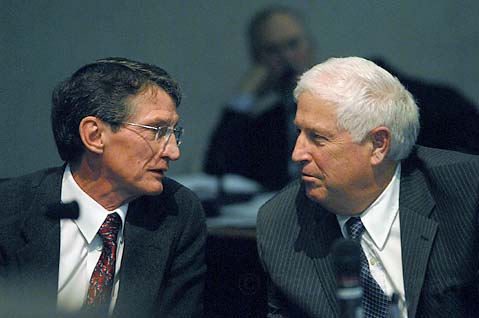
Brown is a fan of Paul, who worked in Orange County before replacing Goodrich in 2005, because she brought with her a program that eventually evolved into Santa Barbara County’s “Leadership Project,” an organizational overhaul that refocused the county to pursue accountability, customer focus, and efficiency, also known as “ACE.” The hard-to-understand program, which has won awards but also been the focus of a Grand Jury investigation, eliminated the hundreds of pay levels that previously existed and instituted larger pay bands for similar positions, allowing managers and executives to be compensated more easily-whether by bonuses or raises-for adhering to ACE standards. But some worry the compensation system encourages streamlining over diligence, and fear some projects aren’t getting the attention they deserve.
Plan for New Priorities
Perhaps nowhere are the effects of the Leadership Project more at work than in the Department of Planning and Development. Long a source of problems for the county, the department’s reorganization became one of Brown’s stated goals as CEO.
Just prior to former planning director Alexeeff’s departure in 2005, there was a value shift. Efficiency and customer service were the new names of the game under Brown, according to Alexeeff, and there was an effort to make decisions faster and final. But that led to planning that was done “not with land use in mind but money,” explained former planner Greg Mohr, who said the environment took a backseat to economic and political concerns. Echoed former 3rd District supervisor Marshall, “There’s no sense of good planning.” In fact, with claims that more than 120 planners have left the department since 2001, it’s surprising that there’s any planning whatsoever. Why does Brown think the department’s shrunk so much? “Business is drying up,” he claimed.
With the department’s leadership and staff in disarray, Brown “hijacked the department,” as one person put it. He put long-range planning under the CEO wing (though it’s since returned to the planning department) and put several people in charge, namely assistant CEO Baker, John McInnes, Derek Johnson, and Dave Matson-all reportedly are smart cookies, but not planners by profession.
There was a time, according to retired deputy Laponis, when the county administrator literally was absent from the room during planning items. These days, it’s not entirely clear how involved Brown is with the planning process-since much of it takes place at the staff level-but there does seem to be a greater presence than ever before, evidenced in the very least by Baker’s role as assistant CEO. “Now, often, if [the CEO] is not playing a direct role,” said Laponis, “he will have someone he’s appointed.”
Brown’s influence was apparent in at least three controversial planning projects. With $4.5 billion of potential revenue in mind, he asked staff to give red carpet treatment to the North Hills project near Orcutt, which would have built as many as 7,500 new homes plus two million square feet of commercial space; it died a quick death at the Planning Commission.
And, according to a staffer’s email to Michelle Gibbs-a former planner working on the controversial Miramar Hotel redevelopment-Brown had been urging quick approval to “get the bed tax going.” For months, Gibbs expressed concerns about the need for full environmental review of the project, but she finally quit, only to be escorted out promptly and without warning at the start of her two-week notice. There still has been no full explanation why.
Brown also flexed some muscle toward the Ballantyne project, a more than 13,000-square-foot mansion located near Farren Road on the eastern gateway to the Gaviota Coast. In an email to the developer’s attorney, assistant CEO Baker revealed Brown’s involvement when he wrote, “The purpose of this letter is to document the decisions that Mr. Brown made regarding the information that the applicants need to submit for the environmental review process for the residence and accessory structures.”
From Brown’s perspective, he’s just operating in the best interests of a cash-strapped county. Because roughly half of the land in the county is owned by the federal government-namely Los Padres National Forest and Vandenberg Air Force Base-and more than 80 percent of the remaining half is in agriculture, Brown explained, “The ability to generate revenue is severely constrained.”
Given his position, no one should fault Brown for looking for revenue opportunities. But three years later, Brown’s attempts to streamline planning for the public haven’t gone very far. At a recent board meeting, several public speakers lamented the pain of having to go through the planning process with the county, the same complaints people have been filing for years.
We Keep on Knocking, But :
Once a place where staffers were encouraged to speak with the press and public, the flow of information coming from the county has slowed in the past couple years, ironically coinciding with the arrival of William Boyer, whom Brown brought in as the county’s communications director in 2006. Brown insists there is no policy that prevents county staff from speaking with the media and Boyer says his role is to make sure the information provided is accurate. But despite their assurances, many reporters in town openly complain that it’s been more difficult than ever to get through to county staff, not to mention getting straight, timely answers from Boyer. Yet on any significant matter, Boyer often is the only one to talk.
When Brown and the county were sued by outgoing public defender James Egar, only Boyer was available to the media. When the county was dealing with Greka’s repeated oil spills, department leaders suggested others take the lead, but, for a time, Brown insisted the message go through Boyer. According to an email sent by assistant CEO Baker, this was because the county was worried the Greka situation “could spin out of control.” When former planner Gibbs quit and was escorted out of the building, all questions were directed to Boyer. Those who were allowed to speak with the media about the Miramar told their superiors the exact questions asked and answered.
When the county hired Ann Detrick to take over as director of the embattled ADMHS, The Independent immediately requested an interview, to which Boyer responded, “She won’t have much to say.” At least five requests and three months later-when ADMHS problems were coming to a head and the county was desperate to get out its message-the request was finally granted. The in-person interview was held with Boyer sitting at the table, assisting Detrick with answers and chipping in when the subject got controversial. To this day, Detrick has never responded to any phone call from The Independent.
Insiders say often the staff won’t talk out of fear. Said one county employee: “[Brown’s] supporting an employee culture where people are intimidated.” Many county employees, both current and former, wouldn’t comment on the record for this story. Some, like former assistant CEO Ron Cortez, avoided specific questions about Brown, saying they’d best be answered by the Board of Supervisors. Others, like recently retired CEO analyst Zandra Cholmondeley, wouldn’t talk at all. At one point during one of two interviews conducted for this article, Brown said his secretary probably would have left already if he was such a bad boss. But when asked if she’d be willing to talk, Boyer spoke up to say, “It’s doubtful.”
Even getting Mike Brown to speak proved challenging. It took several emails and weeks to schedule an interview with Brown, which was also conducted with Boyer observing, recording, and taking notes. Boyer also asked to see portions of this story prior to publication; he was denied outright. And some documents requested from the county on October 31, 2008, for background research still have not been provided, despite repeated requests.
And it goes beyond reporters. The Santa Barbara County Grand Jury, while investigating the Leadership Project, also had difficulty gathering information, reporting that a request for one memo “could not be achieved without the intervention of County Counsel.” (Brown said the information had been provided, but that human resources asked for a clarification.) While the requested material was hard to come by, the Grand Jury did get unsolicited memos from Brown’s office that were deemed “inappropriate” because of the appearance of trying to influence the investigation.
Once again, this struggle for information isn’t unique to Brown’s time in Santa Barbara. A January 1995 article in the Arizona Daily Star reported, “Fear of a Brown tongue-lashing has prompted some longtime employees who have always cooperated with the media to refuse to talk to reporters.”
Former 2nd District supervisor Susan Rose remains worried about this stranglehold on information and “deeply disturbed” about Brown’s emerging role as county executive, explaining she wouldn’t have voted to renew his contract if she’d seen this coming. “The Board of Supervisors has been given limited access to county staff,” Rose said in a prepared statement. “The flow of information from staff to the community has been impacted. In the past, county government has functioned successfully with independent department heads and involved supervisors. Mike Brown now exercises total control over all departments except those run by elected officials. In effect, county government under Mike Brown has become an autocracy.”
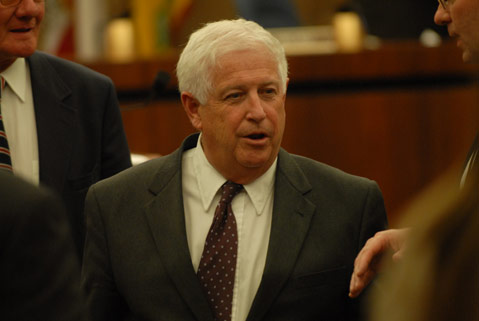
Temper Tantrums
Far before Mike Brown ever became CEO, complaints about his temper were common. Even in Tucson, Brown had a reputation for being “hot-tempered and verbally abusive,” according to the Arizona Daily Star, while he has been described as “heavy-handed,” a “tyrant,” and “a dictator” by some in Santa Barbara County. “He had a short fuse,” said former public health director Heroux. “Heaven help the people he didn’t like,” said another former department head.
Brown’s former employee Lori Norton was most descriptive, explaining that a county executive officer must “be someone who is respected, trusted, and who models important organizational values. That would include someone who considers alternate points of view, exercises good judgment, demonstrates unquestionable integrity, and someone of moderate temperament. I found Mike Brown to be severely lacking in these areas.”
Some of Brown’s temper tantrums stick out like a sore thumb. The first was right after the 9/11 attacks when, on a retreat in Solvang, he told about 200 county managers that all Muslims are terrorists, that Islam is not a religion of peace, and that “they” were out to get “us.” Asked to tone down his remarks, Brown persisted, causing some to leave the room in tears. Many expected him to be fired, but he later apologized, and was punished with two weeks of unpaid leave and forced to undergo diversity and sensitivity training.
In 2004, former personnel director Ann Goodrich was paid $925,000 in a settlement after she filed a complaint with the state employment office claiming she’d been “harassed, subjected to a hostile work environment, and was discriminated against.” She alleged that her August 2003 firing after 16 years on the job was “in retaliation for opposing and reporting discriminatory and harassing workplace conduct by Brown, and for cooperating in the investigation thereof.” The settlement, which was reached before a lawsuit was filed, also stipulated that Goodrich resigned and wasn’t fired-Brown asserts he’s never fired anyone-and also bars anyone from speaking about the matter.
Then, in 2006, former public defender Egar filed suit against the county, alleging that Brown screamed in his face, spit at him, and threatened to “slaughter” him in front of the supervisors. Egar, who didn’t return calls for this story, dropped the suit in June 2008 without any explanation. Details remain scarce, but the county did spend $440,192-including $278,539 on outside legal representation-fighting the lawsuit.
And this year, the county is facing yet another lawsuit involving Brown. This one comes from Heidi Garcia, a former assistant director of ADMHS, who alleges that, after complaining about a hostile work environment, she was “increasingly retaliated against” by Brown, Sue Paul, and ADMHS executives. According to the suit, “Brown has admitted to others that Garcia had to be terminated because she filed complaints, consistent with his history, pattern, and practice of punishing complaining executives and managers who oppose biased, intolerant, harassing, discriminatory, and retaliatory workplaces in the county.” Brown said he had very little interaction with Garcia and wasn’t her direct supervisor.
When asked in a recent interview if, considering this and the $1.4 million he has already cost the county, Brown thinks he might be a liability, he quickly and bluntly answered, “No.”
Few contacted for this story came to Brown’s defense, except for conservative county watchdog Andy Caldwell. He said the county is always dealing with lawsuits because “we live in a litigious society” and pointed out that of the thousands of people Brown has worked with during the past 12 years, only three have brought their issues to the public arena. “I think that is manufacturing a crisis or cause when none exists,” said Caldwell.
The Next Steps
Whether the crisis is manufactured or genuine, two supervisors-Doreen Farr and Janet Wolf-are already moving to rein in Brown. Wolf, who openly worries about transparency in the county, has been a thorn in Brown’s side since she took office in 2006, and Farr has taken a hard stance on the CEO structure, explaining to others in private that she will talk to department heads when she wants to and reporting that people “want the board to make sure they’re setting the policy or direction of the county.” (Farr’s opponent in the November election, Steve Pappas, who currently is trying to get enough votes from Isla Vista tossed out to be named victorious in the close election, has also said there’s “too much authority” in the office.) But the new majority has remained coy about what changes they have in mind, with Farr most recently saying she wants to be in office for a bit to see how things are run.
The board minority of 5th District Supervisor Joe Centeno and 4th District Supervisor Joni Gray were even more reserved-Centeno didn’t respond to any requests for comment, and Gray returned one phone call, but never connected with this reporter.
That makes 1st District Supervisor Salud Carbajal the lynchpin for any drastic move, and he’s indicated that’s a possibility. “Any change on the Board of Supervisors results in other changes,” said Carbajal. “That’s the reality. It’s no surprise. And there’s no doubt some of the changes during the last few years have led to some good and have led to some less desirable outcomes.” But Carbajal, ever with an eye on higher office down the road, tends to be risk-adverse, and if the structure is close enough to working, he might be willing to stick it out.
As it is now, Brown’s contract would expire in May 2011. His new contract-approved amid the Egar allegations in June 2007, with Carbajal and Wolf dissenting-also makes him more expensive to fire without cause, so it’s unlikely the new board majority would toss Brown when faced with the ongoing nightmare budget. But amending the county’s CEO structure is a very real idea, and it’s an idea that’ll surely be aired on February 17, a little more than a month after the new board majority’s been in power.



